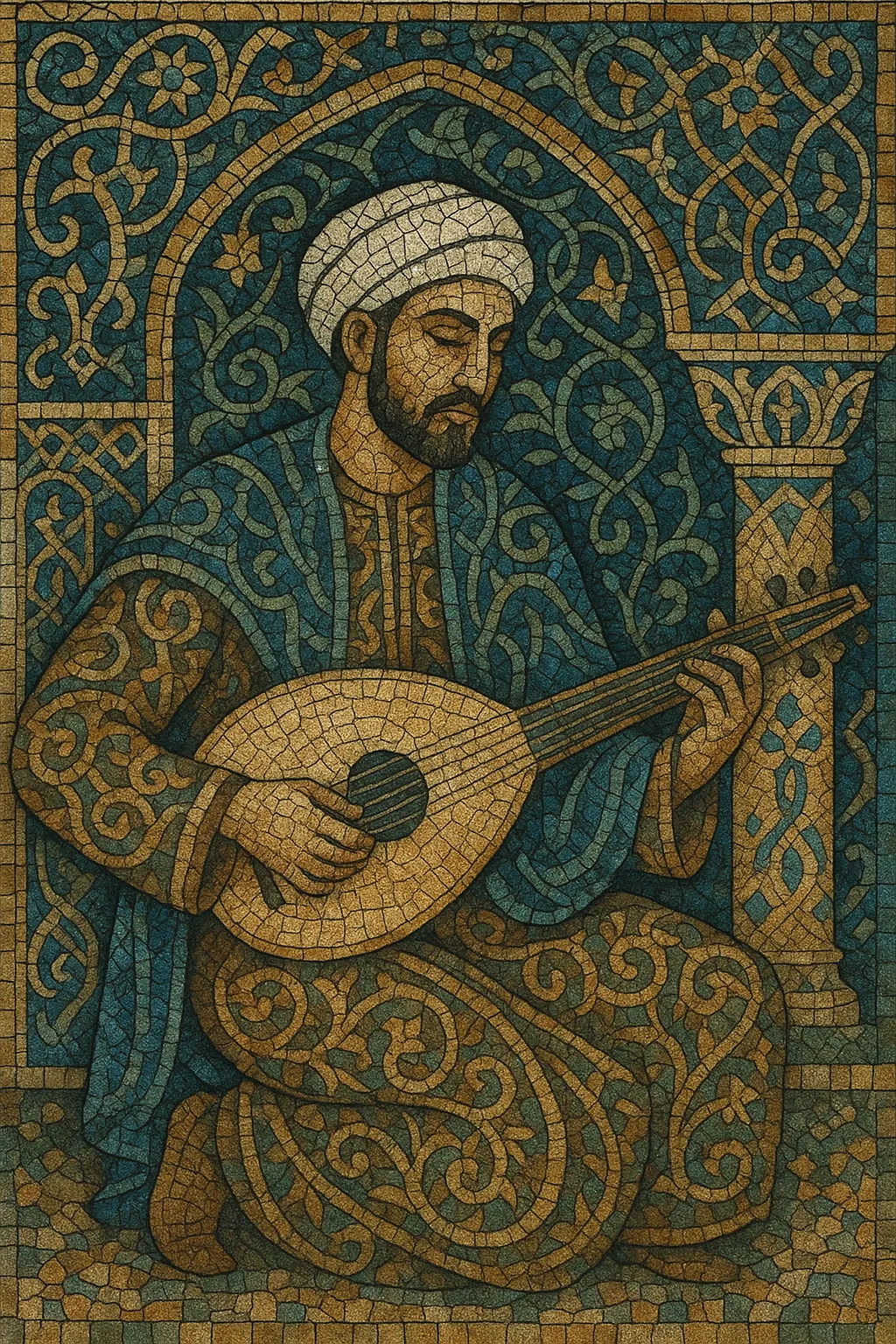Islamic modal music refers to the interconnected family of modal systems that developed across the Islamic world, most prominently the Arabic maqam, the Persian dastgāh/radif, the Ottoman-Turkish makam, the Maghrebi nuba, and the Central Asian shashmaqam.
These systems share core ideas: a repertoire of modes built from characteristic scale fragments (ajnas or tetrachords), microtonal intervals beyond Western 12-tone equal temperament, recognizable melodic paths (seyir or sayr), and cadential formulas. Music is primarily monophonic and heterophonic, with melody and timbre taking precedence over functional harmony, and it is articulated through cyclical rhythms (iqāʿāt/usûl) and highly developed improvisation (taqsim, taksim, avaz).
The foundations of Islamic modal music crystallized during the early Islamic centuries, especially under the Abbasids. Scholars such as al-Kindi (9th century) and al-Farabi (10th century) synthesized practical musicianship with inherited Greco-Arabic acoustical theory, articulating modal thinking, intervallic structures, and rhythmic cycles. Ibn Sina (Avicenna) further systematized modal concepts, linking theory to affect and practice.
By the 13th century, Safi al-Din al-Urmawi codified detailed modal and rhythmic frameworks that profoundly shaped later Arabic, Persian, and Ottoman traditions. Subsequent theorists like Abd al-Qadir al-Maraghi refined these ideas, while court and urban institutions across Baghdad, Cairo, Damascus, Isfahan, and Constantinople nurtured professional performance practices.
From these shared roots emerged distinctive but related lineages: Arabic maqam with its ajnas and iqāʿāt; Persian dastgāh with the radif of canonical gusheh; Ottoman-Turkish makam with elaborate seyir and usûl; Maghrebi Andalusian nuba cycles; and Central Asian shashmaqam. Despite regional vocabularies, they retained common principles of modal identity, melodic development, and improvisation.
The 19th–20th centuries brought recording, broadcasting, and conservatory systems, which standardized teaching while also encouraging innovation. Outstanding performers revitalized taqsim/avaz traditions, extended modal modulation, and adapted instruments (violin, cello) into ensembles. Today, Islamic modal music thrives in concert halls and conservatories across the Middle East, North Africa, Turkey, Iran, and Central Asia, and informs diasporic and cross-genre collaborations.
Select a core mode (for example, a maqam/makam/dastgāh). Internalize its constituent ajnas or tetrachords, characteristic intervals (including microtones), pivotal notes, and typical cadences. Study the mode’s seyir (melodic path): common starting ranges, climaxes, and endings.
Compose monophonically or in heterophony, focusing on a single melodic line colored by timbral nuance. Use idiomatic ornaments—grace notes, slides, trills, and nuanced vibrato—to articulate the mode’s identity. Cadential formulas (qafla) should clearly reaffirm the tonic.
Begin with an unmetered improvisation (taqsim/avaz) to introduce the mode and its key phrases, then proceed to metered sections using established forms (sama‘i, pesrev, bashraf, muwashshah, nuba movements) or newly composed pieces that respect the mode’s grammar. Consider tasteful modulations to closely related modes before returning to the principal mode.
Employ cyclical rhythms (iqāʿāt/usûl) matched to the piece’s character—ranging from slow, spacious cycles to lively dance meters. Percussion such as riqq, darbuka, and bendir articulate these patterns with dynamic control.
Use canonical instruments: oud, qanun, ney, kamancheh, tar, santur, violin, cello, riqq, and frame drums. For voice, prioritize clear diction and microtonal intonation; melismatic passages and layali/mawwal-style improvisation highlight expressive control.
Avoid Western functional harmony. If using drones or occasional parallel lines, ensure they support rather than obscure modal identity. The focus remains on modal color, melodic contour, and rhythmic breath.
Transcribe master taqsim/avaz and learn canonical pieces to absorb modal clichés, modulation tactics, and formal pacing. Practice slow, tone-focused exercises to refine intonation in non-equal-tempered intervals.


